Likes
- All the muscle car you’d ever want.
- Impressive build quality and reliability.
- Retaining value extremely well.
- So much charm and charisma.
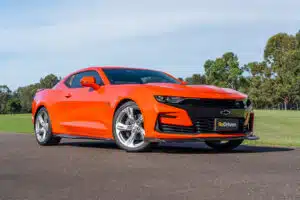
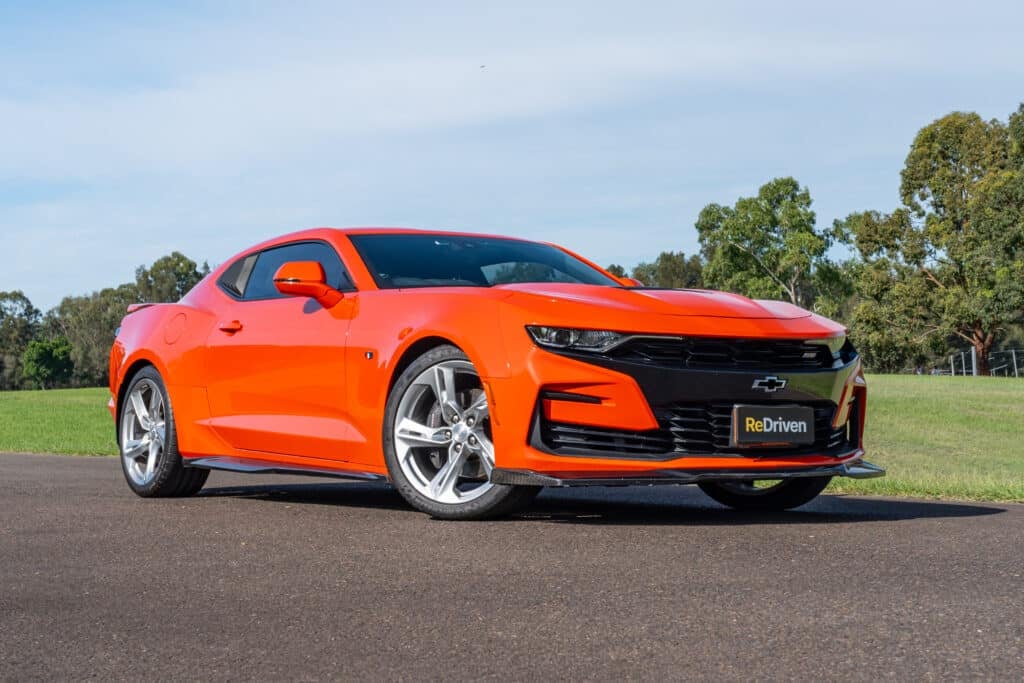
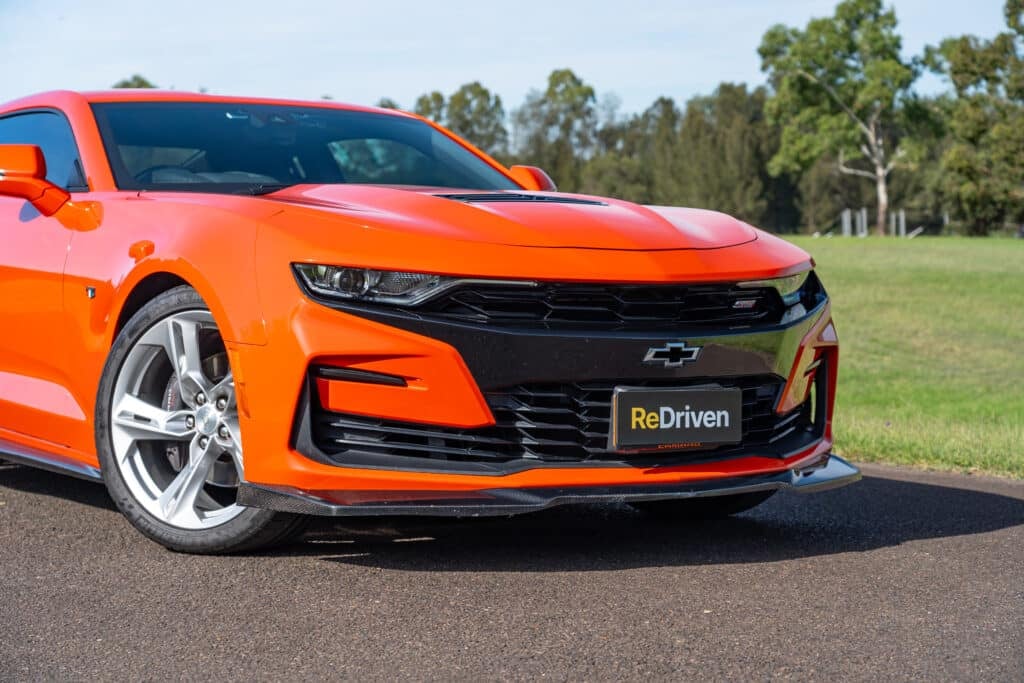
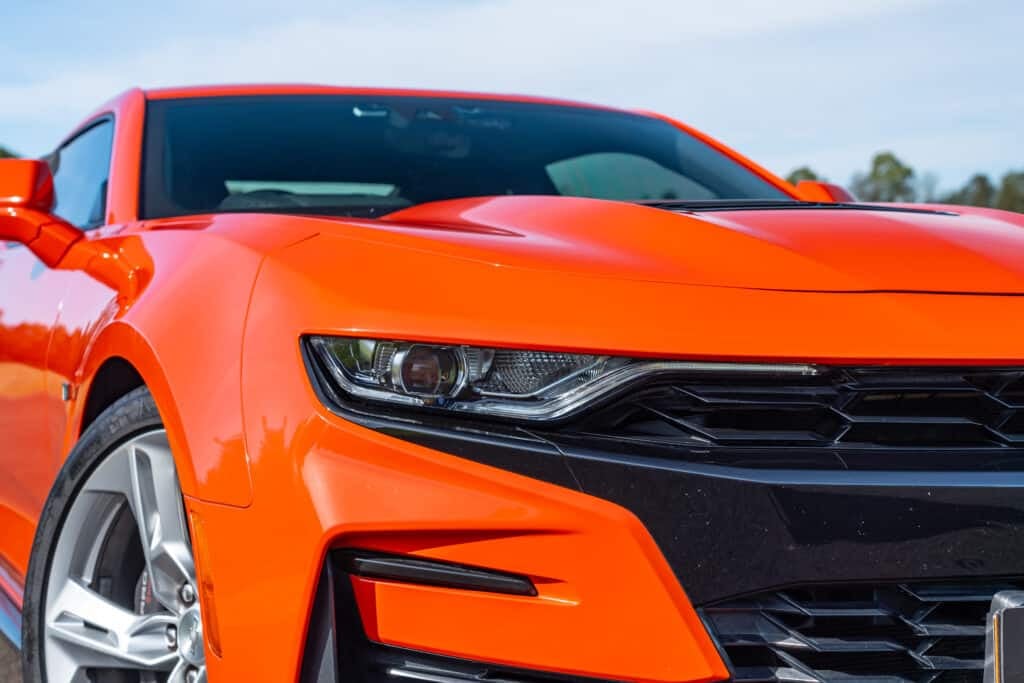
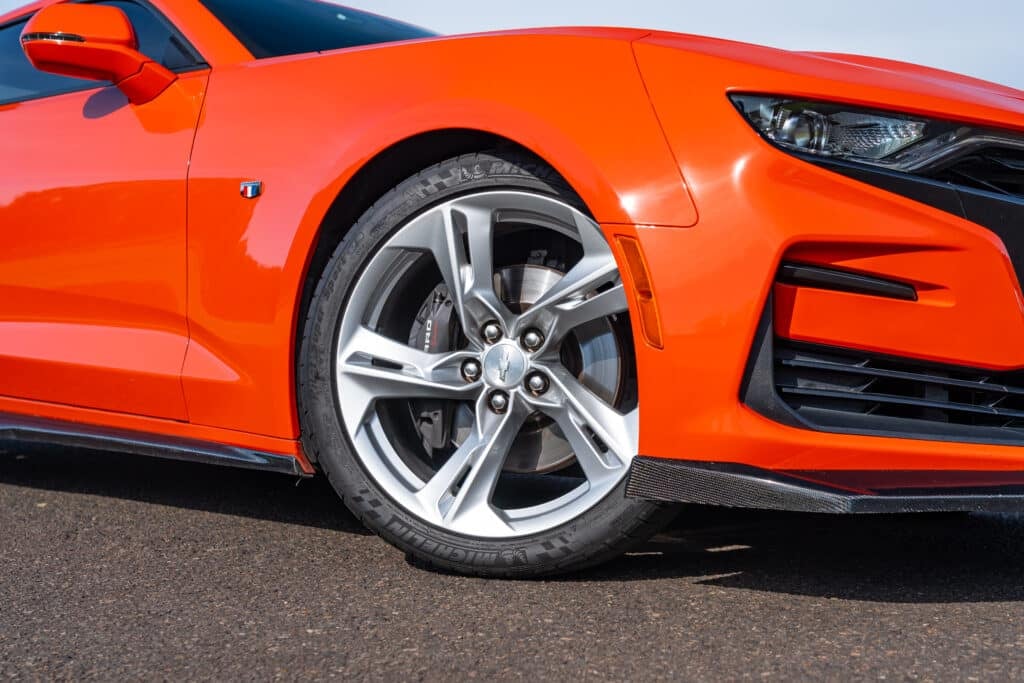

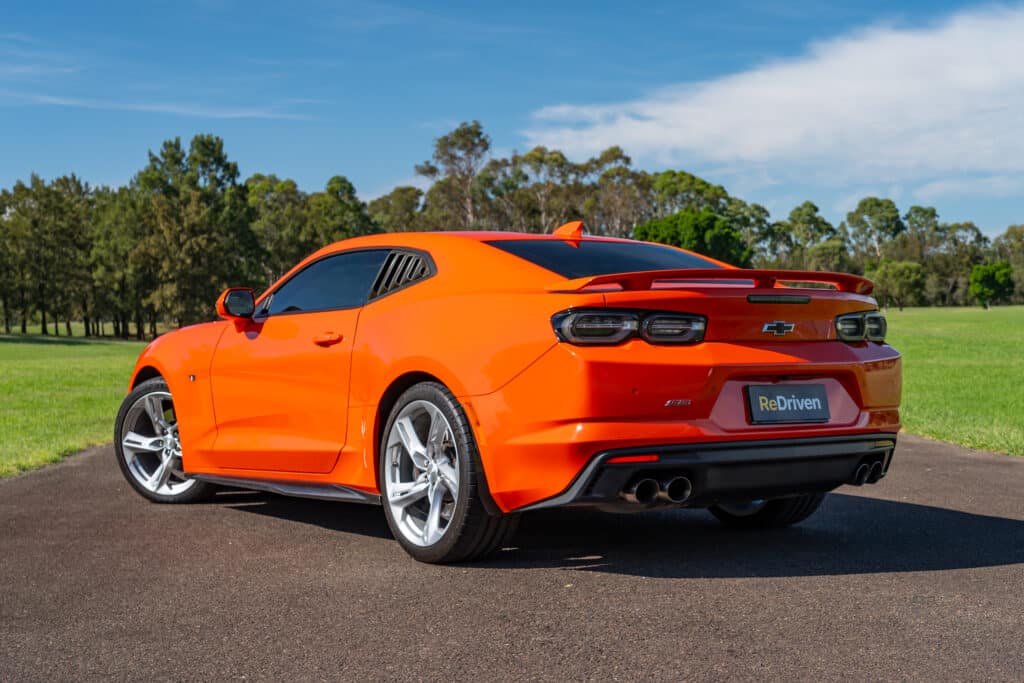
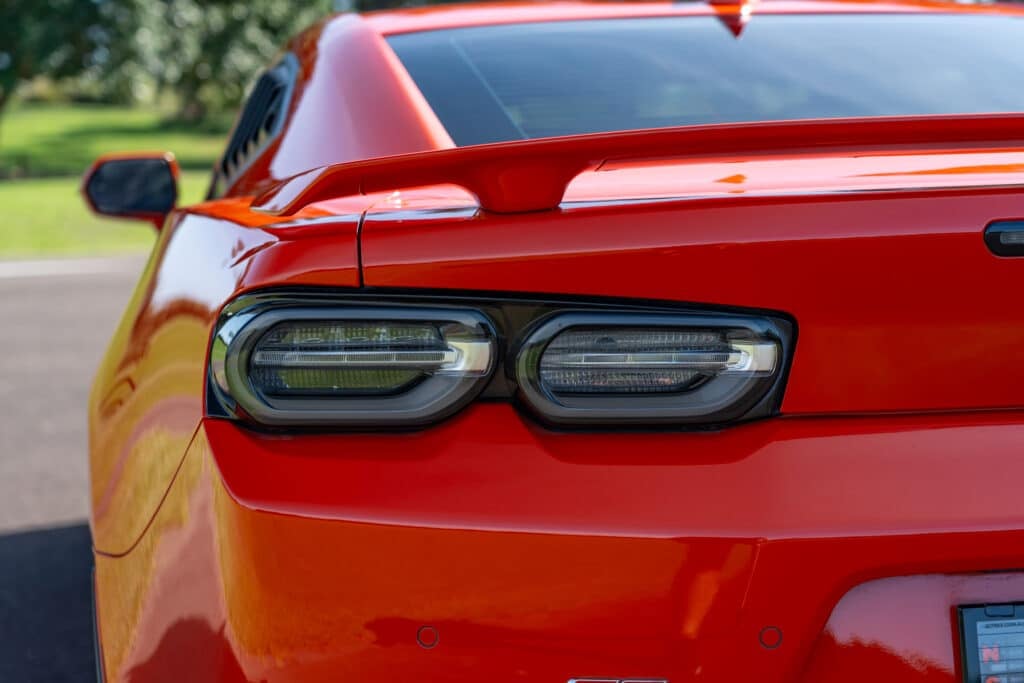
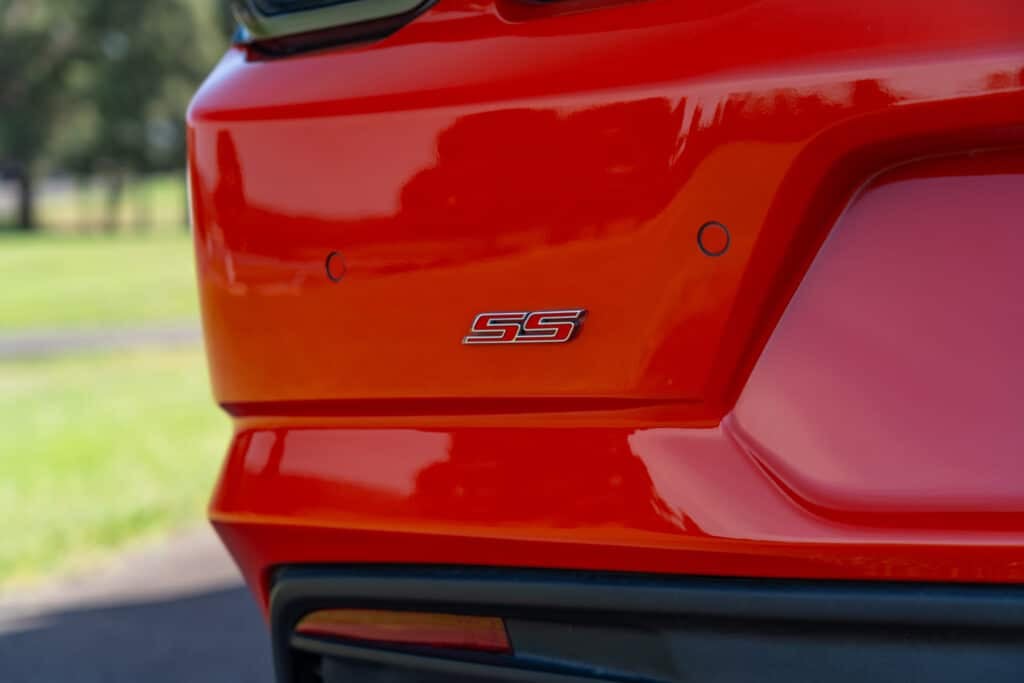

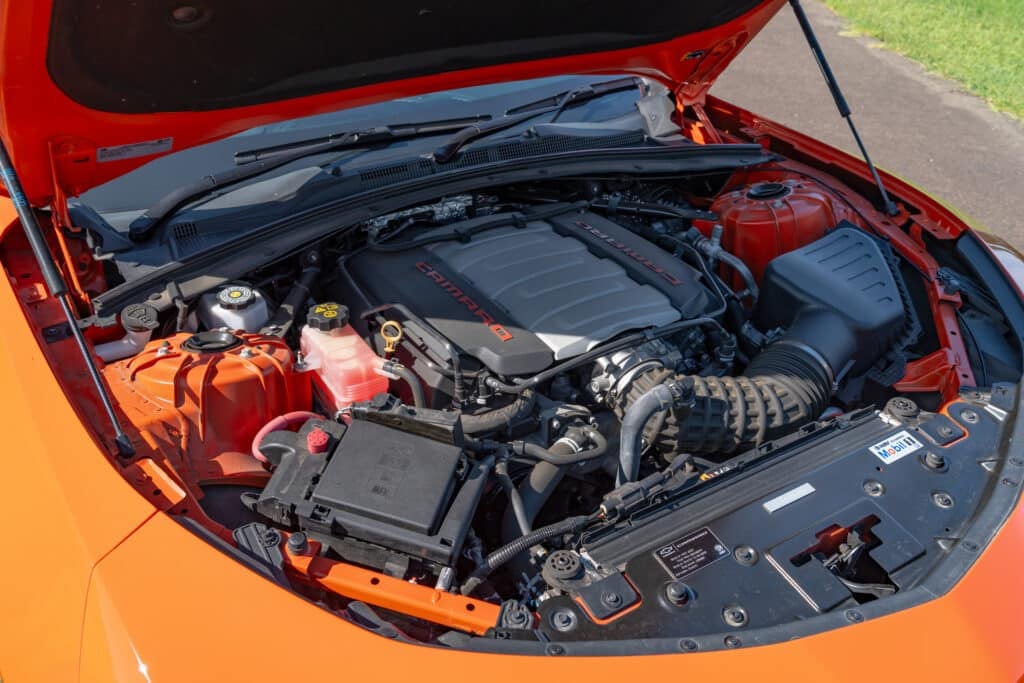
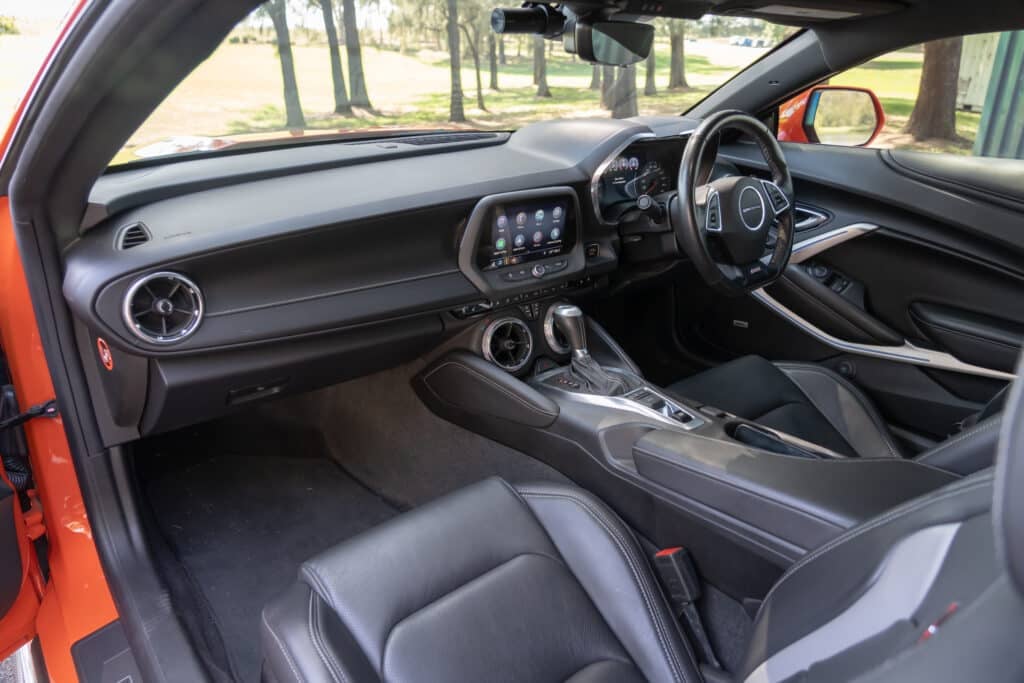
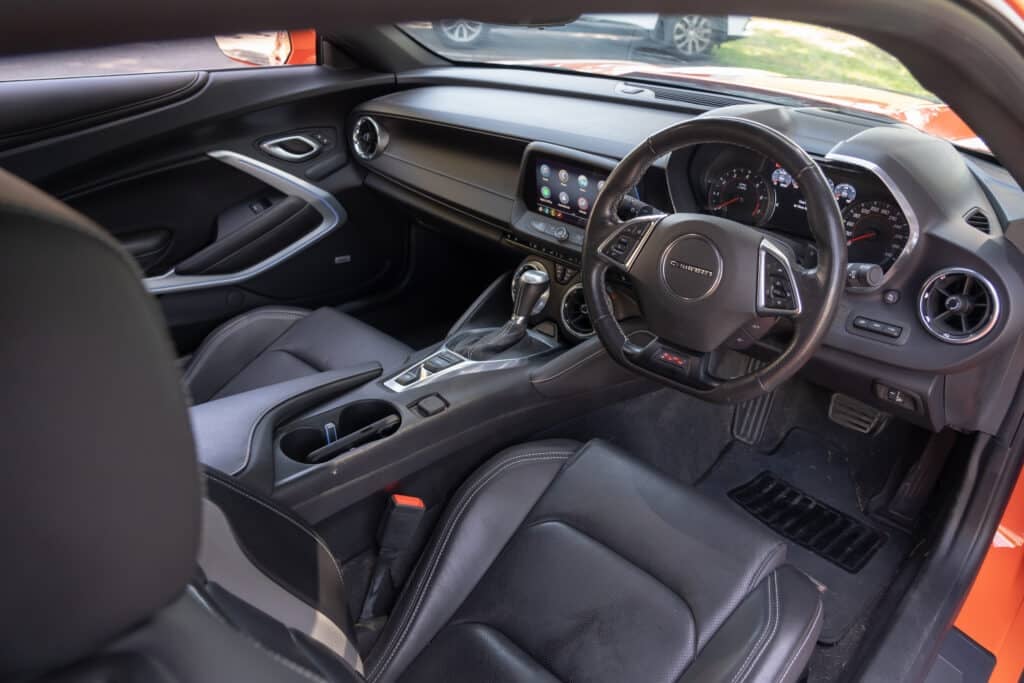



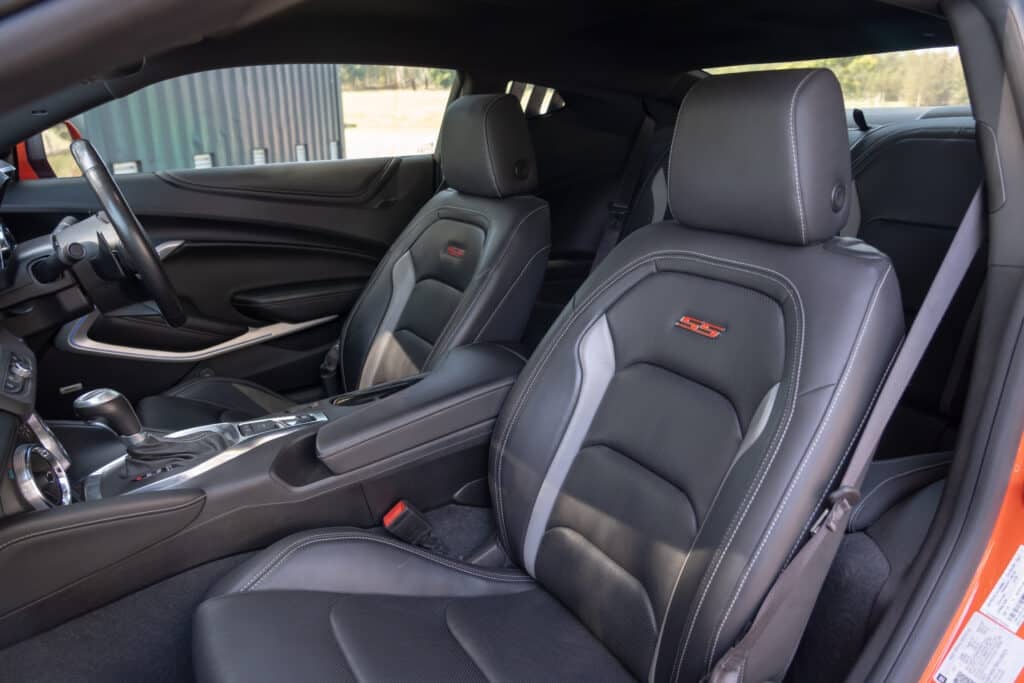
Released in Australia in 2018, the sixth-generation Chevrolet Camaro 2SS Coupe, originally built by General Motors in Michigan, underwent an extensive right-hand-drive conversion by Holden Special Vehicles (HSV) at their facility in Clayton, Victoria. However, do not mistake this conversion for the crude, backyard modifications often seen with some other importers. This was a meticulous, factory-level re-engineering process.
HSV and its engineering partner Walkinshaw invested three years, millions of dollars, and more than 400 unique components to ensure the Camaro delivered an OEM-level fit and finish. The development process included rigorous testing and validation to meet Australian safety and compliance standards, and while a handful of quirks remain, the end result is an impressively well-executed transformation.
Initially, the Camaro was introduced solely in 2SS Coupe form, featuring a naturally aspirated 6.2-litre LT1 V8 driving the rear wheels. Transmission options included a six-speed manual or an eight-speed automatic, with the latter replaced by a 10-speed auto from 2019 onwards.
The 2019 model year also saw a significant update to the Camaro, introducing a restyled front fascia that divided opinion, along with improvements to onboard technology and features. While the updated design wasn’t universally praised, the mechanical refinements and upgraded tech helped keep the Camaro competitive.
Early 2020 marked the arrival of the supercharged 6.2-litre LT4-powered ZL1, bringing a whole new level of performance to the lineup. With its roots in the Chevrolet Corvette Z06, this engine transformed the Camaro into a serious track-focused machine, but for those seeking an even sharper edge, the optional 1LE package pushed the envelope further. The 1LE pack added a raft of performance upgrades, including adjustable suspension, additional aero components, and a more aggressive cooling package, effectively turning the ZL1 into a road-legal race car.
Further enhancing the Camaro’s appeal, Walkinshaw offered a factory-backed Power Pack, taking performance up a notch and unlocking a soundtrack that could rival some of the angriest-sounding muscle cars ever produced.
In terms of features and equipment, the Camaro is well equipped. Apple CarPlay and Android Auto are standard, alongside a premium nine-speaker Bose audio system, dual-zone climate control, wireless phone charging, and heated and ventilated leather seats. Safety equipment is solid but not cutting-edge, with a reasonable suite of driver aids, though it lacks some of the latest autonomous features found in newer rivals.
American cars have long been the subject of debate regarding build quality and reliability, and while the Camaro is not without its quirks, it does benefit from HSV’s lower-volume, high-attention-to-detail conversion process. Compared to some other mass-produced American vehicles, the Australian-delivered Camaro exhibits a level of fit and finish that may surprise skeptics.
Strong demand and limited supply have kept used values remarkably stable, with many examples even appreciating in price. Given that no direct replacement is expected anytime soon, this trend is likely to continue.
While the Camaro ticks nearly every box for a muscle car enthusiast and may even prove to be something of a sound financial investment, there are key factors to consider before buying.
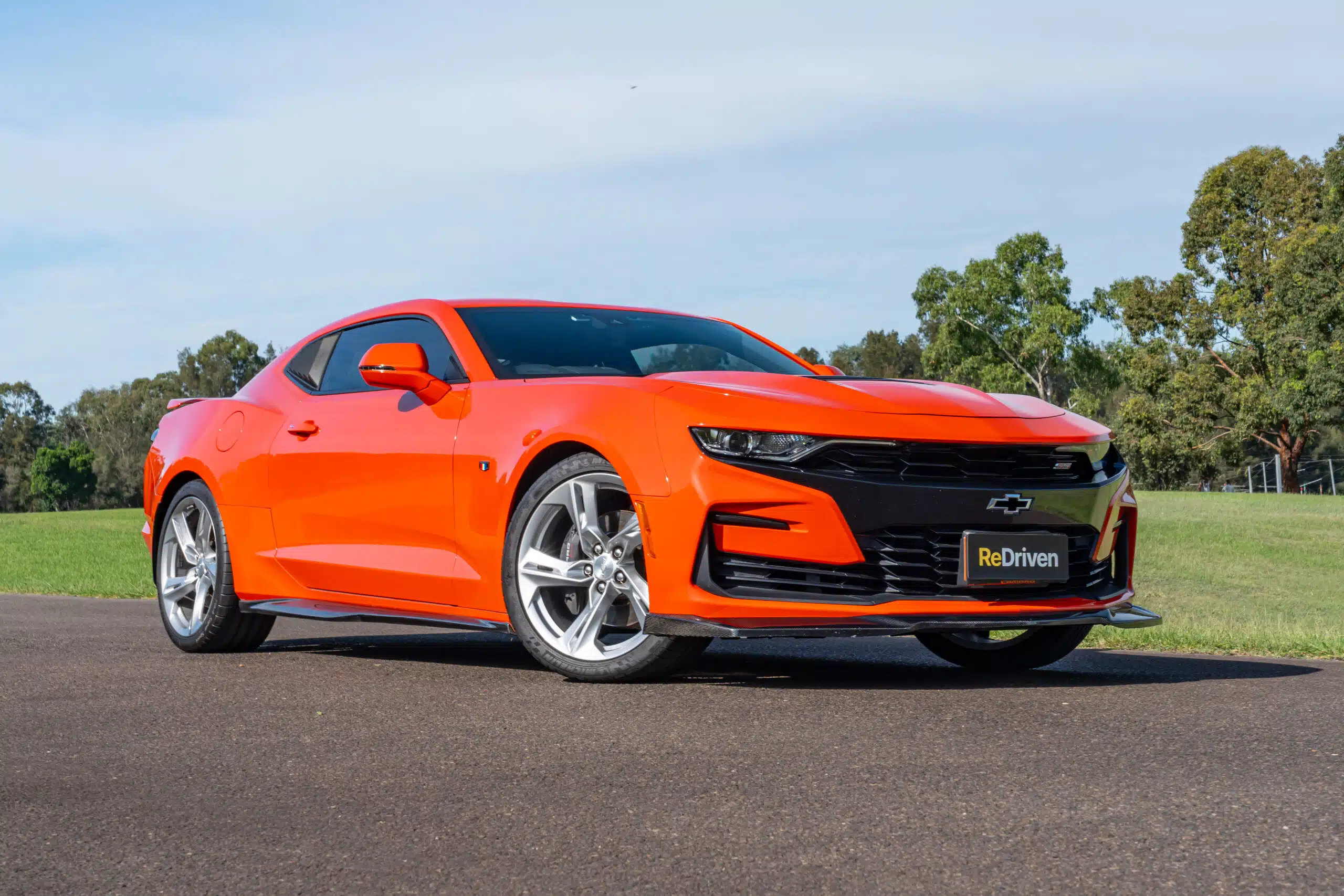
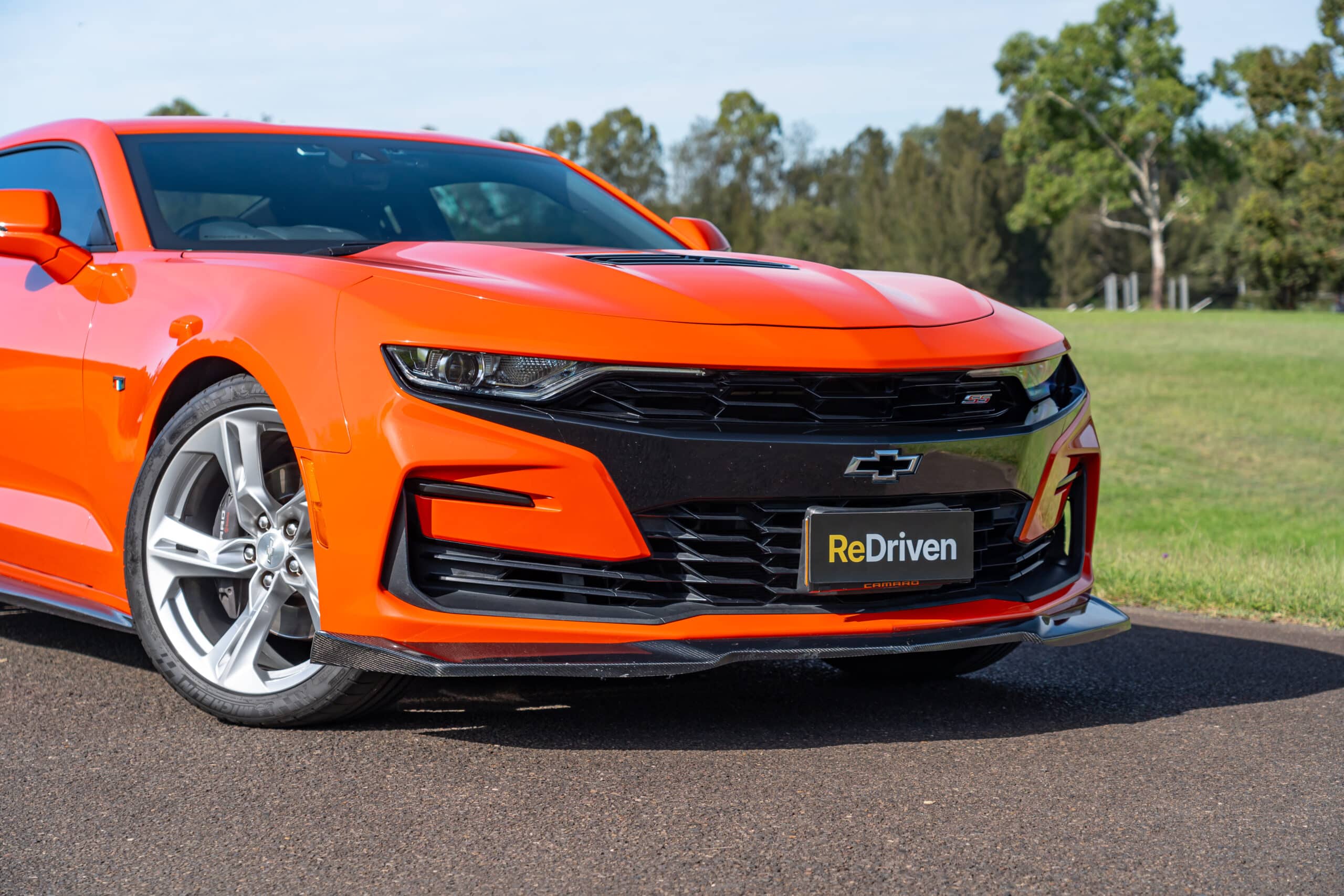

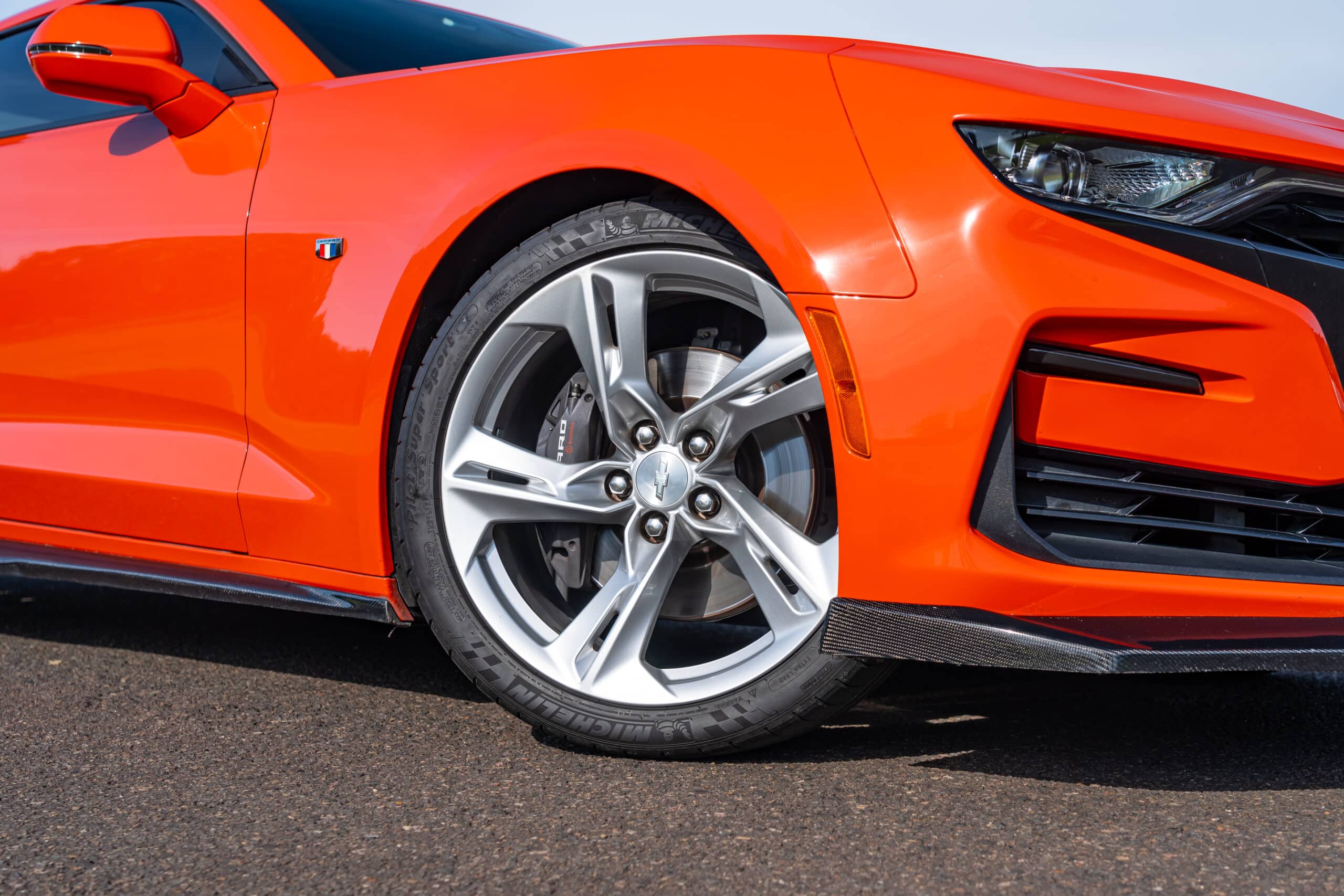

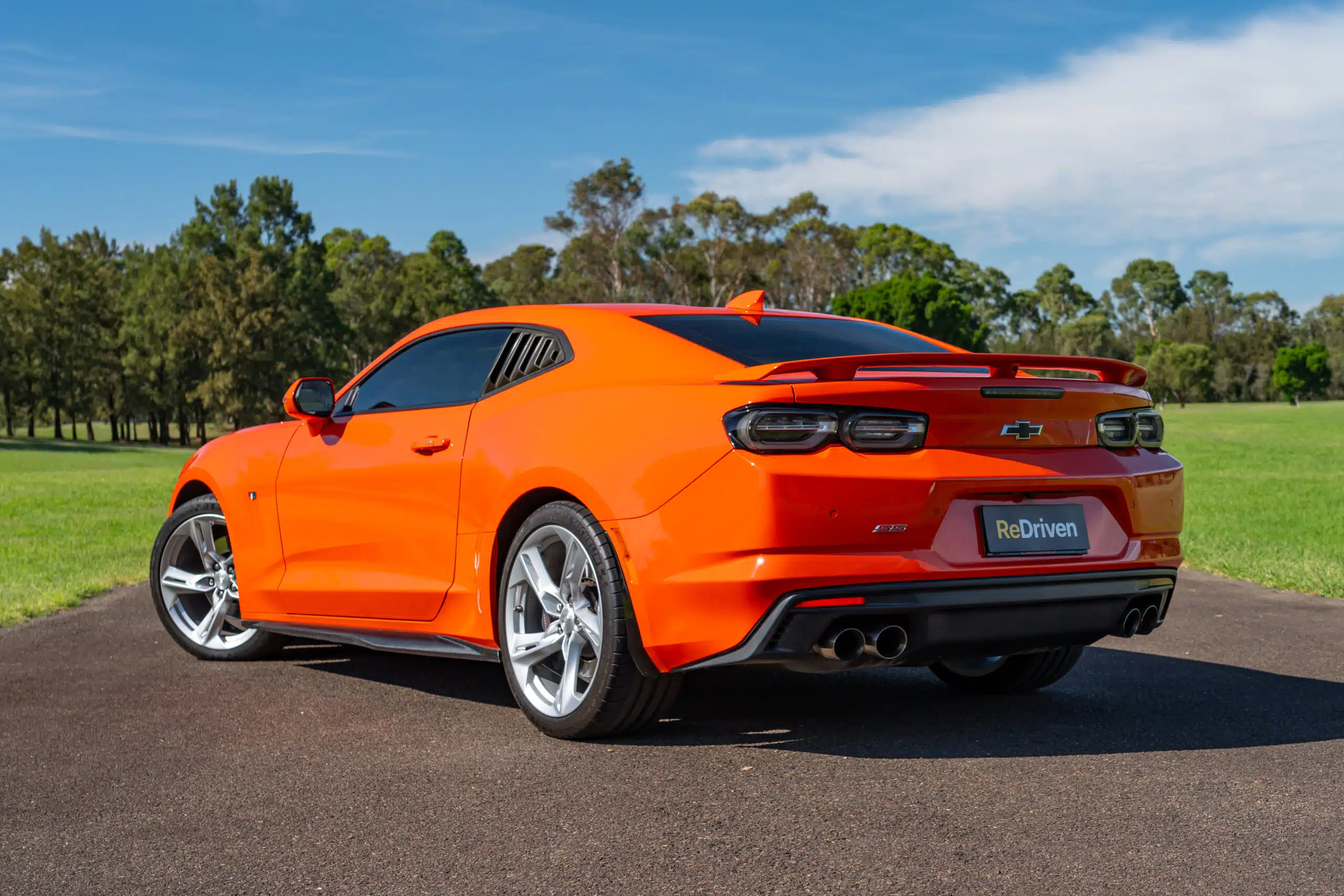
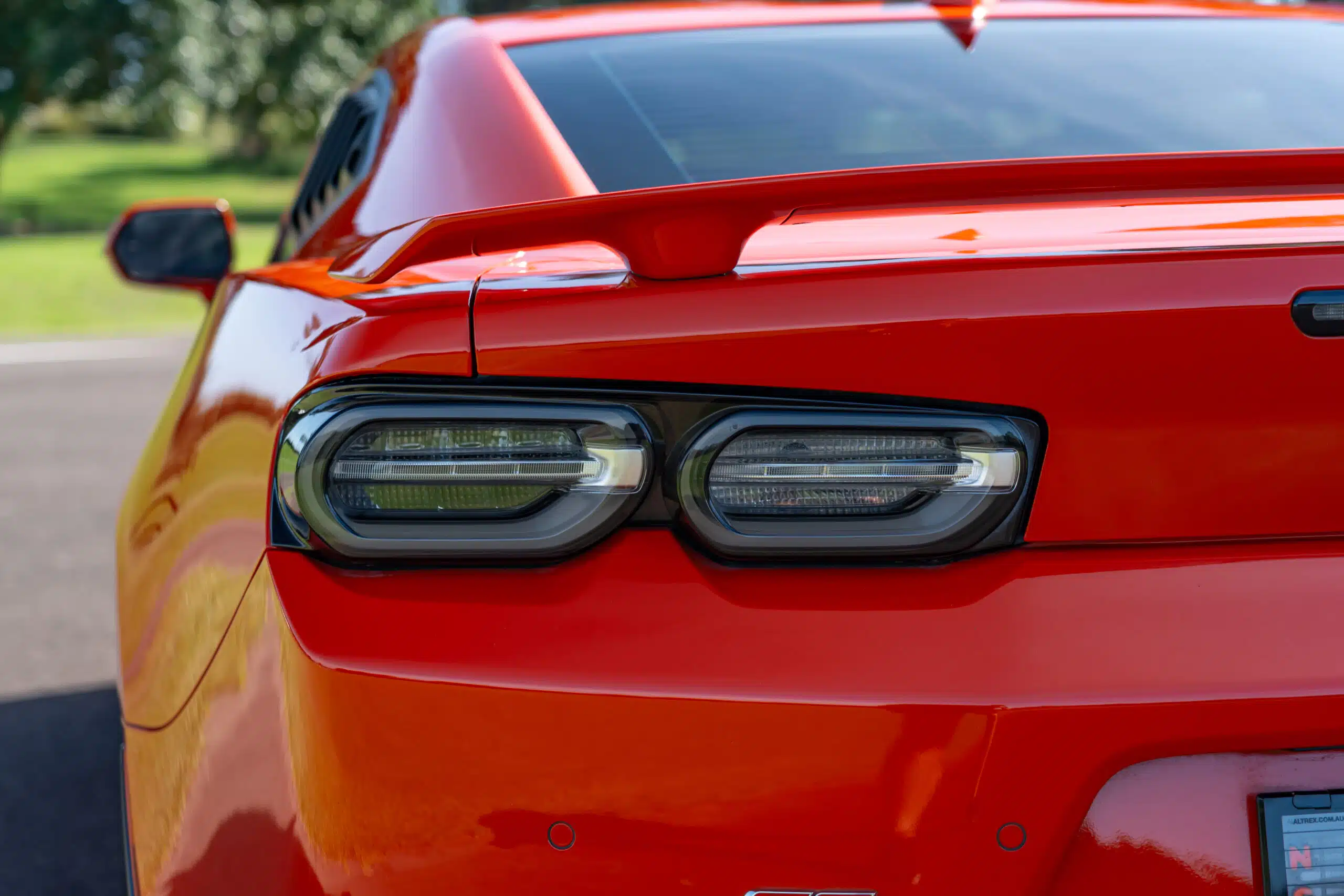

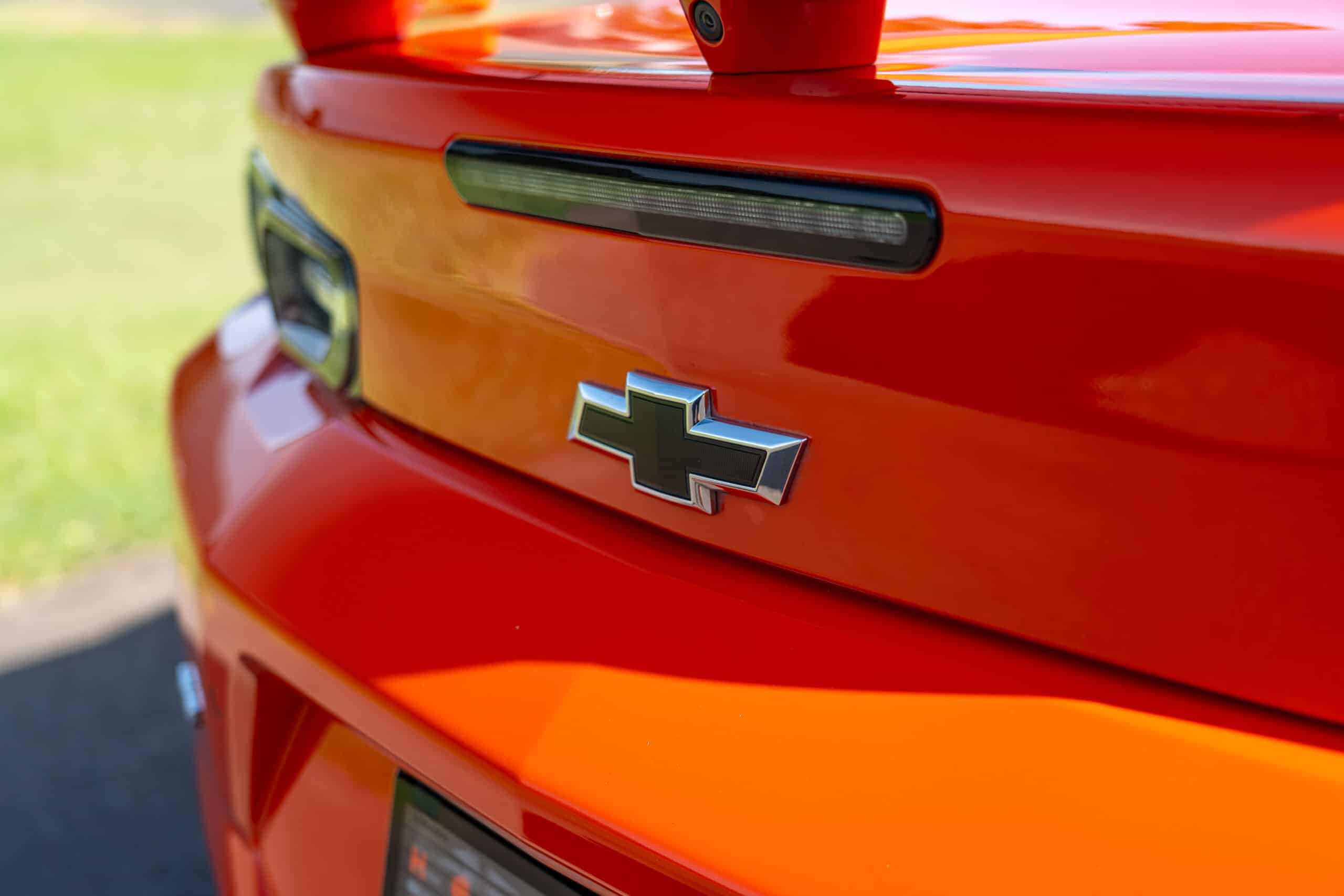
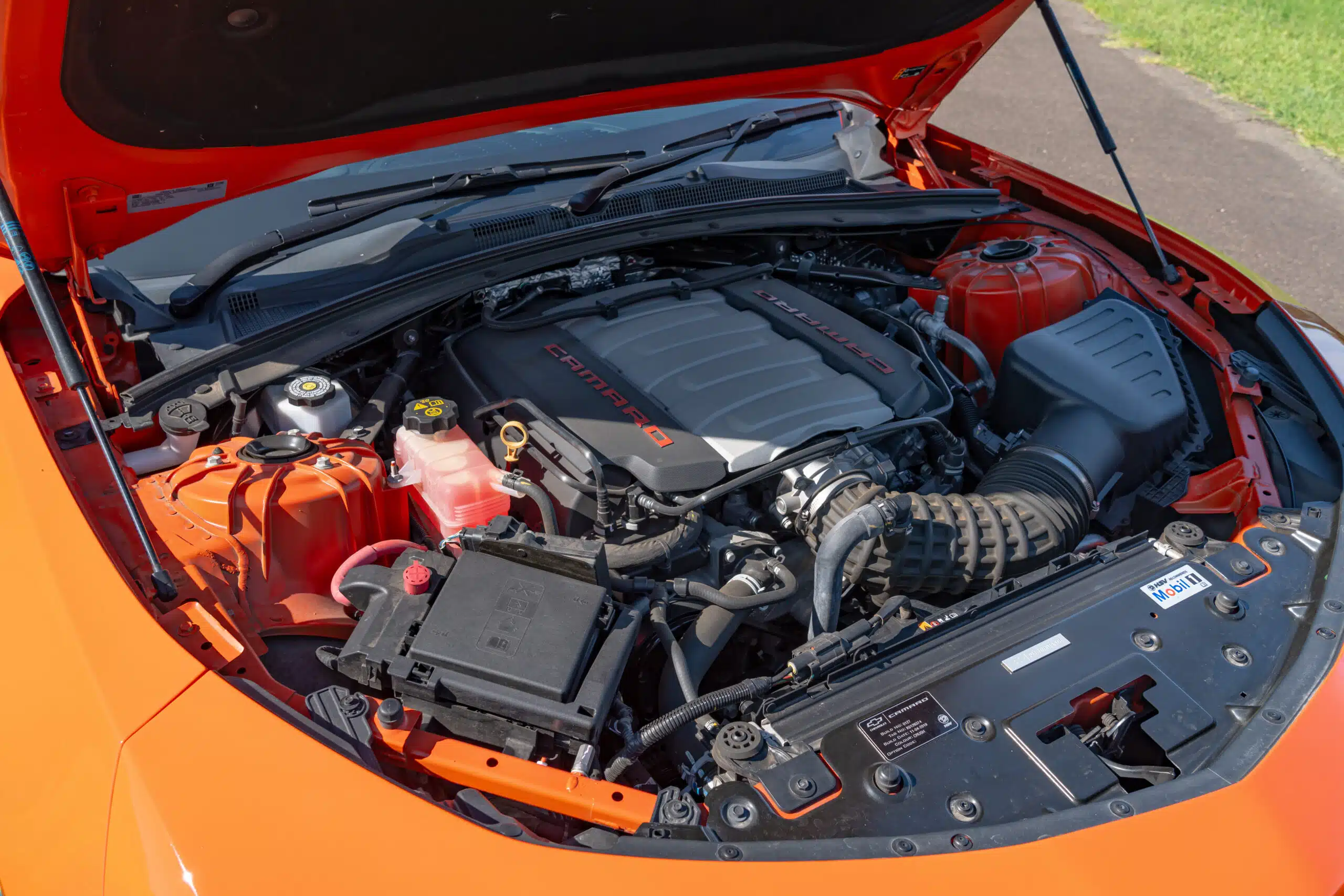
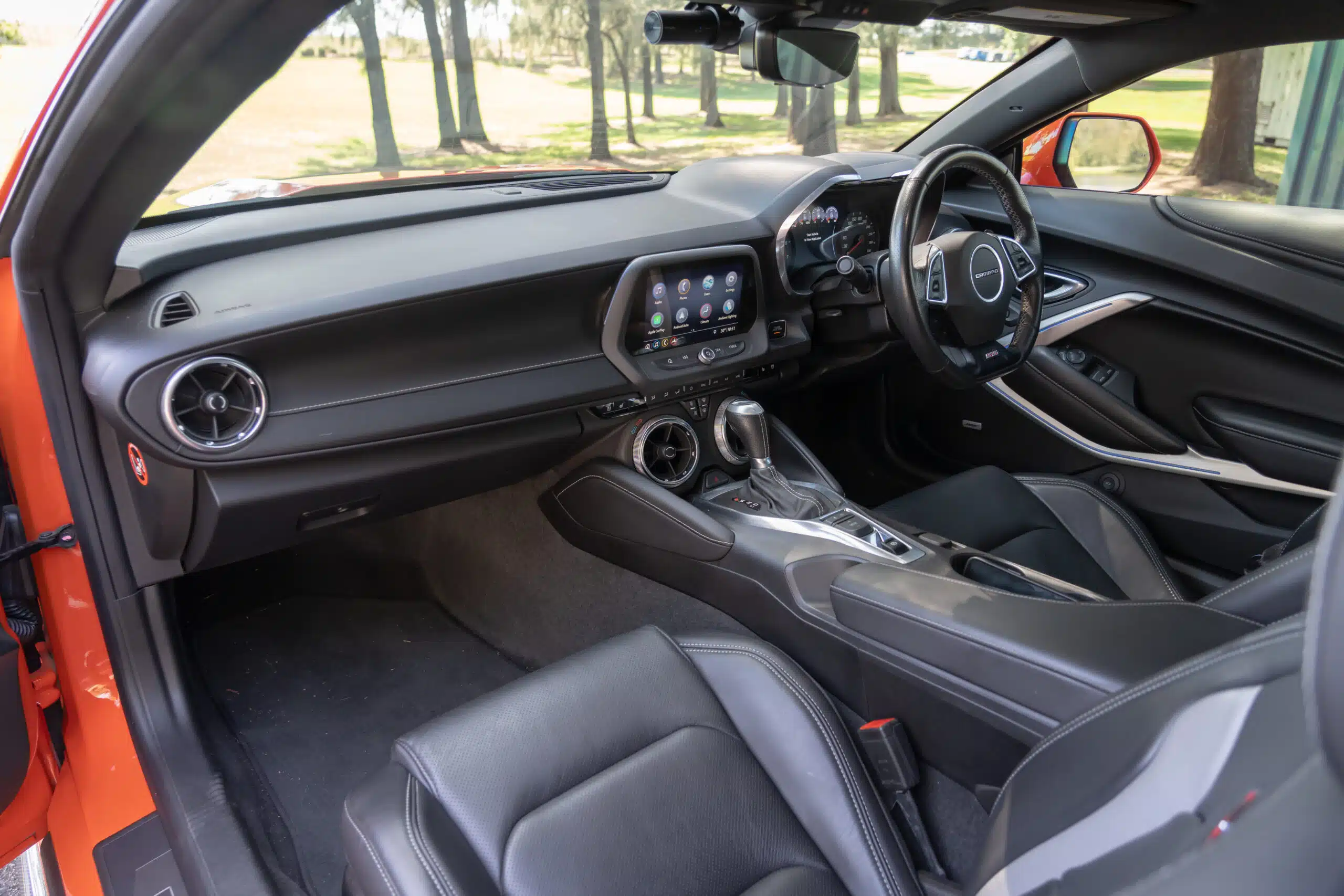
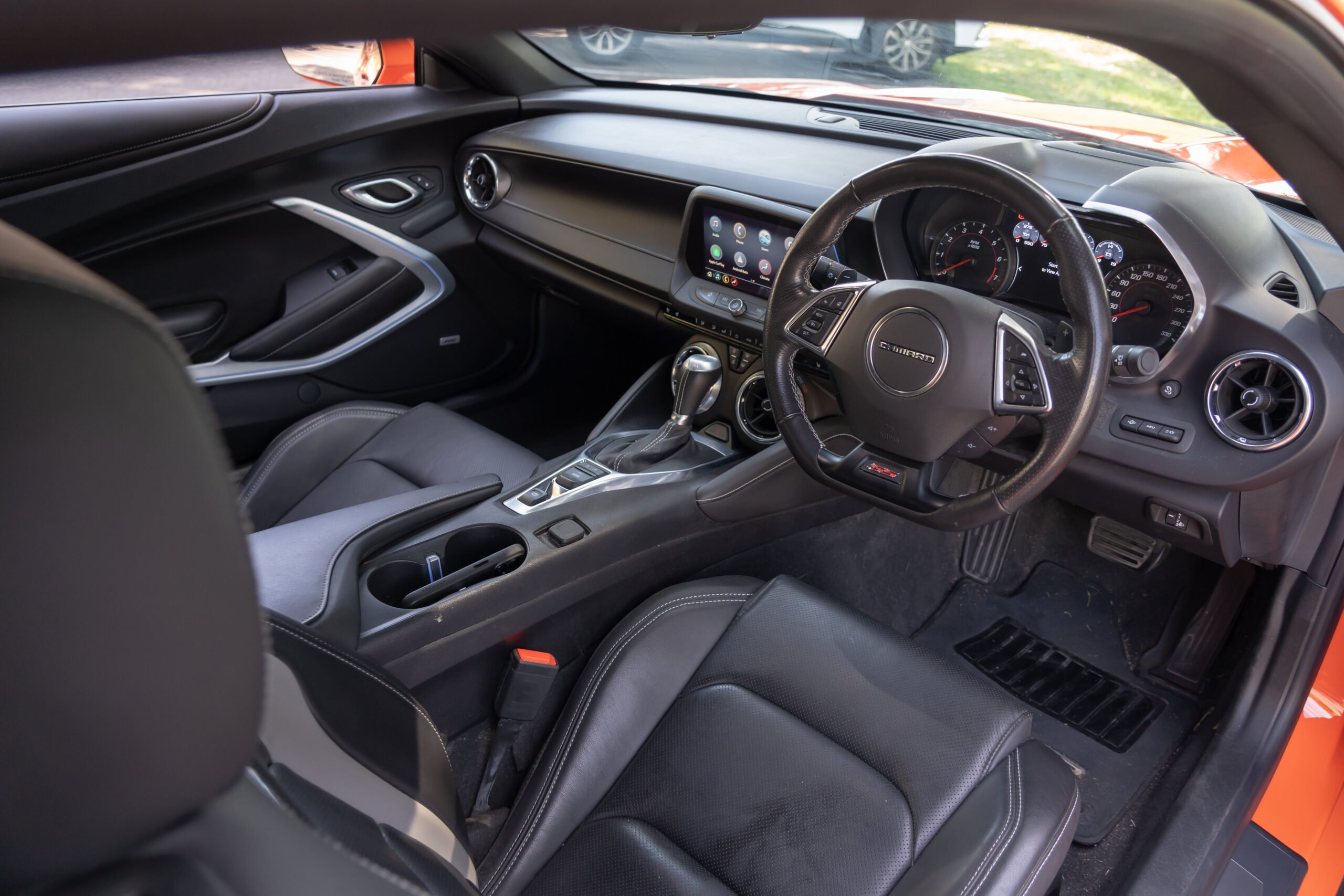
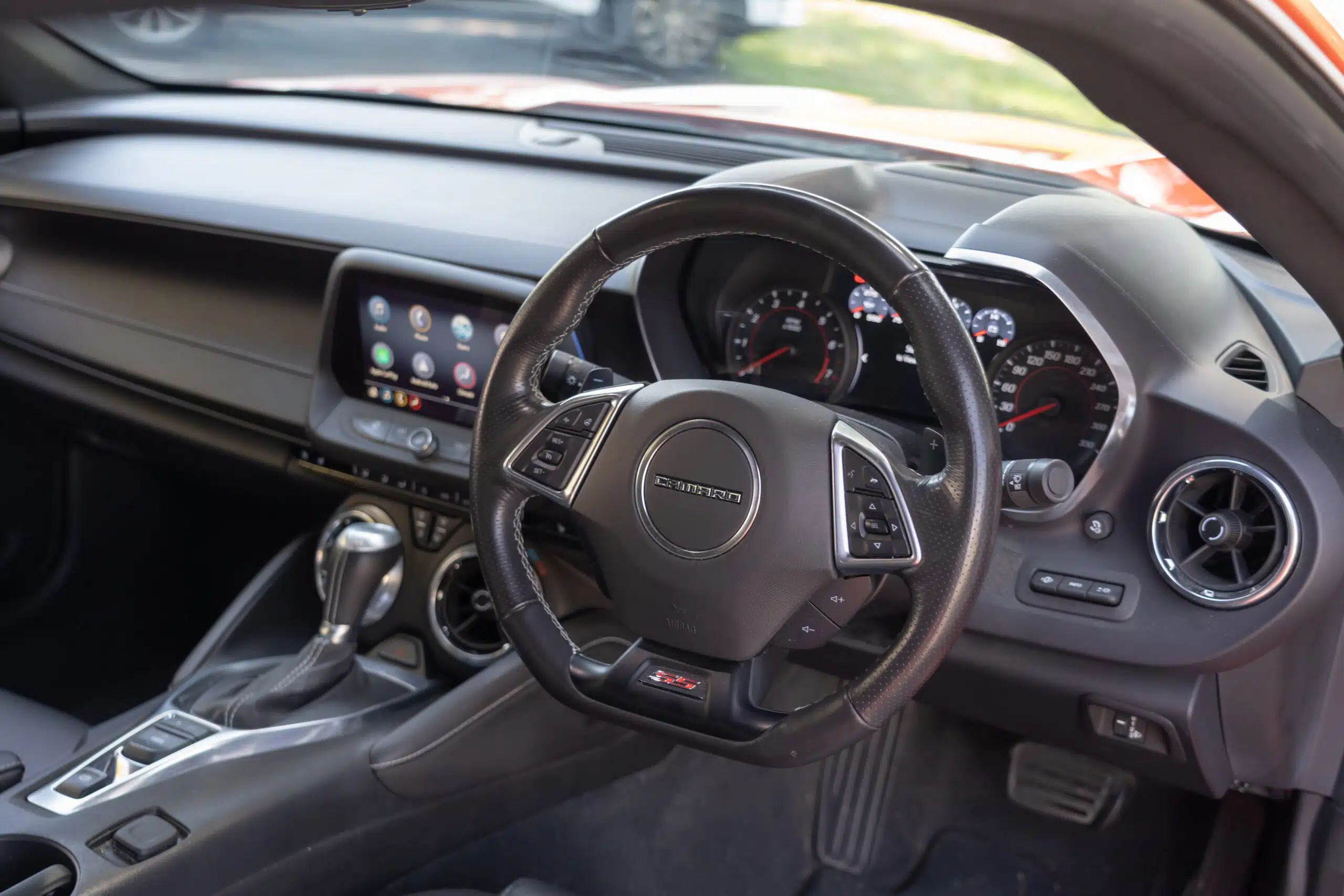
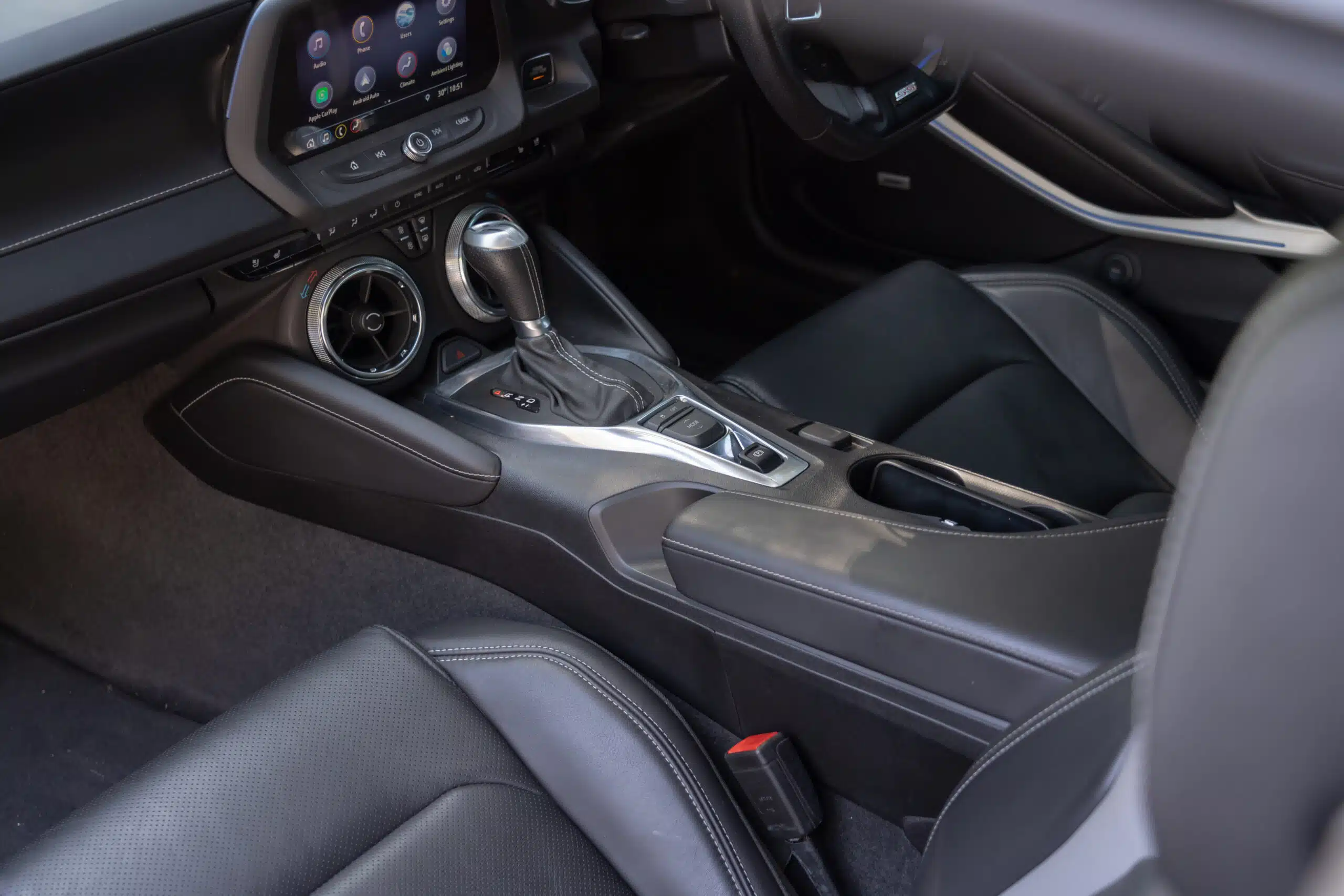
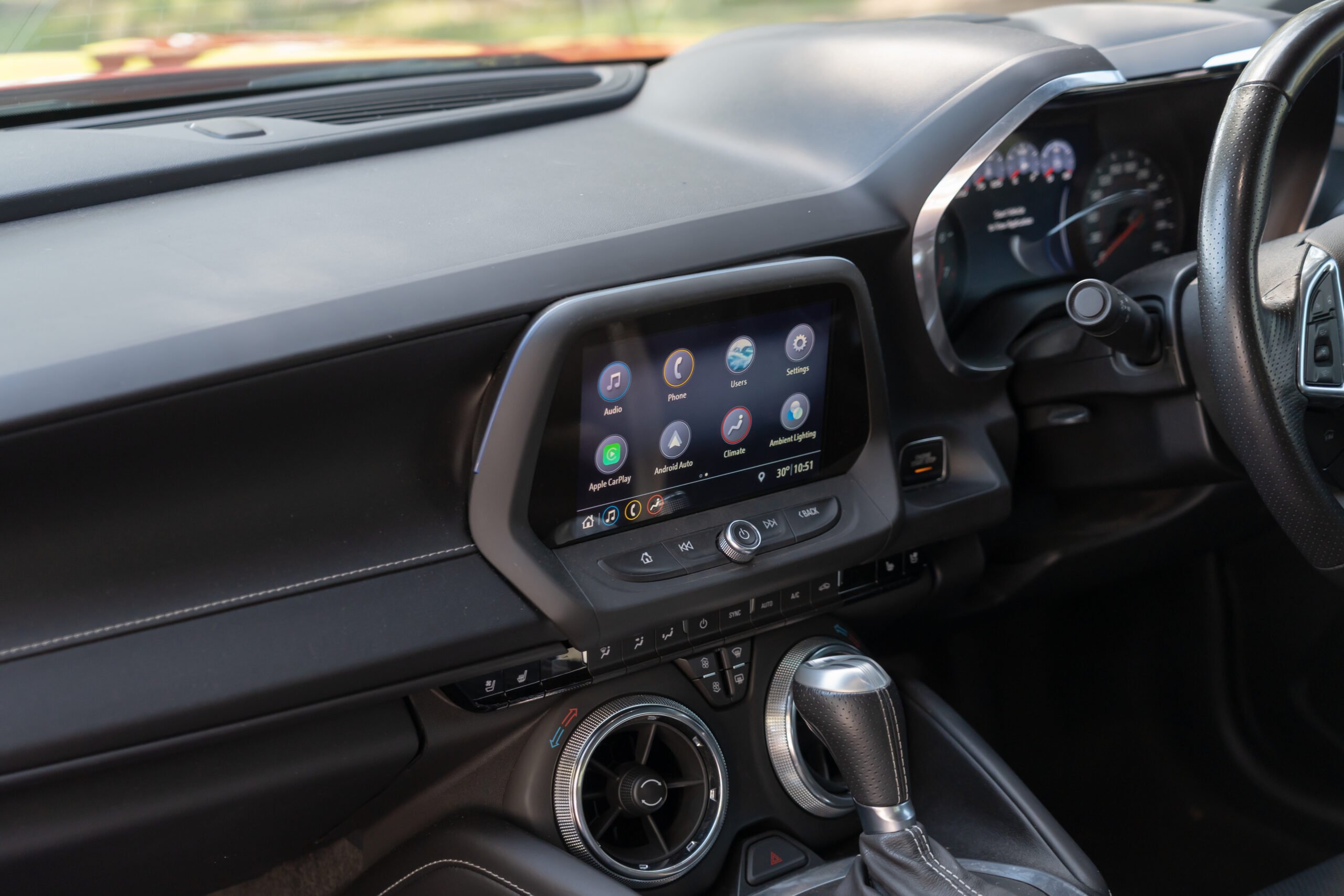
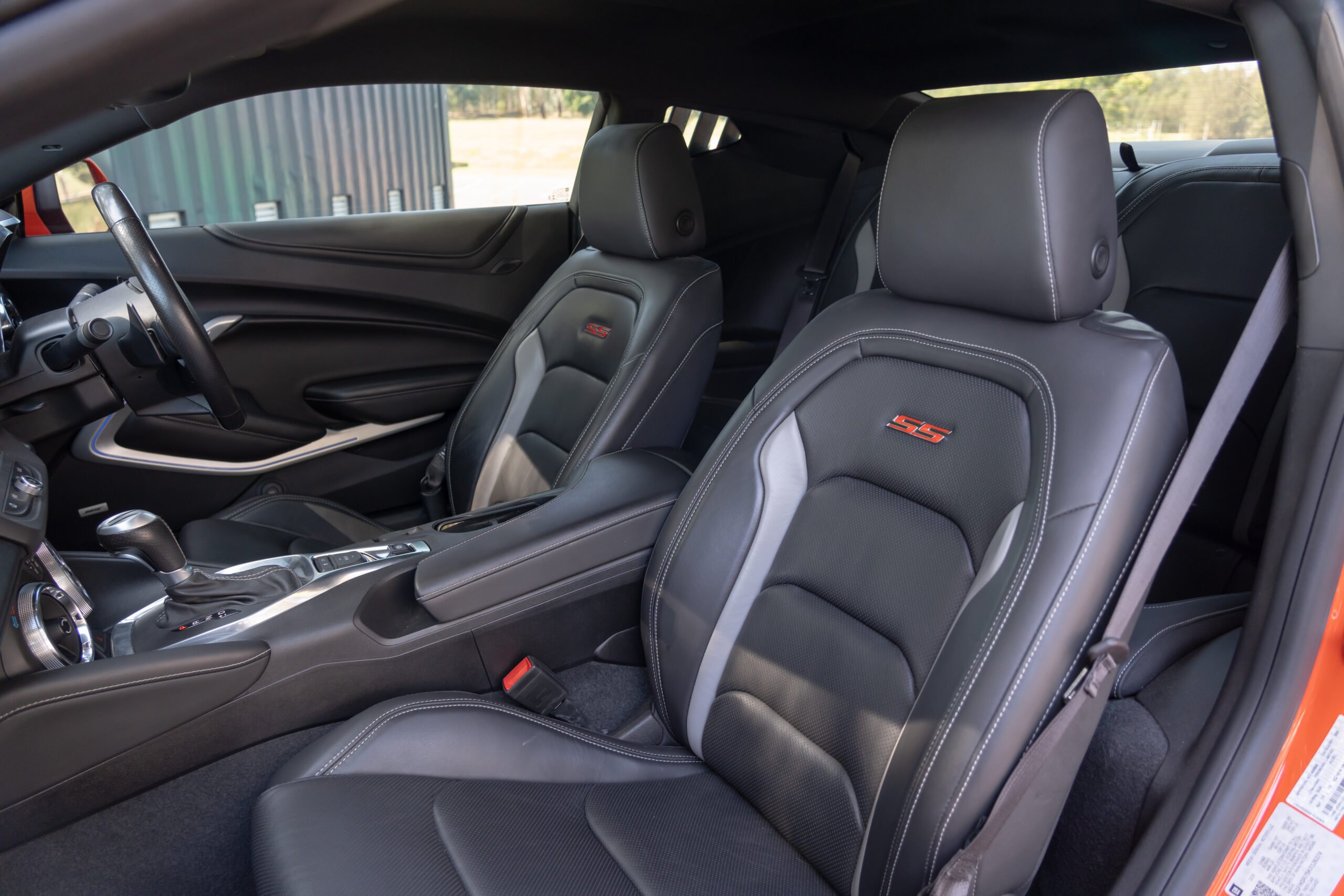
















Exterior:
Interior:
Exterior:
Interior:
Mechanically:
Transmission:
Parts Availability:
Exterior:
Interior:
Mechanically:
Transmission:
Parts Availability:
Generally speaking, choosing to buy a car like the Camaro makes very little logical sense. V8 muscle cars aren’t bought with your head, they’re bought with your heart. But somehow, the Camaro manages to satisfy both.
Your heart will fall hard for all the emotional and subjective elements, the aggressive styling, the deep intoxicating V8 rumble, the sheer thrill of sinking your right foot into it. Everything about the Camaro’s character is designed to make you smile, to stir something primal, and we struggle to see how anyone could be immune to its charms.
Yes, it’s loud, it’s brash, and at times, it’s borderline obnoxious, but it always exhibits these traits in that loveable, larrikin kind of way. It’s a car that doesn’t take itself too seriously, but at the same time, it commands respect.
And then there’s the more surprising part, the Camaro has a way of winning over your head as well.
Mint examples are holding their value remarkably well, and with no direct replacement on the horizon, some may even appreciate in price. Owners report real-world fuel consumption ranging from under 8L/100km to just over 11L/100km, which is seriously impressive for a naturally aspirated 6.2-litre V8. Parts costs, while occasionally subject to supply issues, are generally reasonable, and best of all, you don’t have to be pushing triple digits to have fun behind the wheel. The Camaro is just as engaging to drive at everyday speeds as it is when being wrung
Generally speaking, choosing to buy a car like the Camaro makes very little logical sense. V8 muscle cars aren’t bought with your head, they’re bought with your heart. But somehow, the Camaro manages to satisfy both.
Your heart will fall hard for all the emotional and subjective elements, the aggressive styling, the deep intoxicating V8 rumble, the sheer thrill of sinking your right foot into it. Everything about the Camaro’s character is designed to make you smile, to stir something primal, and we struggle to see how anyone could be immune to its charms.
Yes, it’s loud, it’s brash, and at times, it’s borderline obnoxious, but it always exhibits these traits in that loveable, larrikin kind of way. It’s a car that doesn’t take itself too seriously, but at the same time, it commands respect.
And then there’s the more surprising part, the Camaro has a way of winning over your head as well.
Mint examples are holding their value remarkably well, and with no direct replacement on the horizon, some may even appreciate in price. Owners report real-world fuel consumption ranging from under 8L/100km to just over 11L/100km, which is seriously impressive for a naturally aspirated 6.2-litre V8. Parts costs, while occasionally subject to supply issues, are generally reasonable, and best of all, you don’t have to be pushing triple digits to have fun behind the wheel. The Camaro is just as engaging to drive at everyday speeds as it is when being wrung out on a backroad.
Sure, a Mustang might be the more affordable option. A Lexus RC F might tick a lot of the same boxes, but with superior build quality. A BMW M2 or M4 might be a sharper, more precise driving instrument. But if you’ve got your heart set on a Camaro, and you’ve found a mint, enthusiast-owned example, just do it.
Generally speaking, choosing to buy a car like the Camaro makes very little logical sense. V8 muscle cars aren’t bought with your head, they’re bought with your heart. But somehow, the Camaro manages to satisfy both.
Your heart will fall hard for all the emotional and subjective elements, the aggressive styling, the deep intoxicating V8 rumble, the sheer thrill of sinking your right foot into it. Everything about the Camaro’s character is designed to make you smile, to stir something primal, and we struggle to see how anyone could be immune to its charms.
Yes, it’s loud, it’s brash, and at times, it’s borderline obnoxious, but it always exhibits these traits in that loveable, larrikin kind of way. It’s a car that doesn’t take itself too seriously, but at the same time, it commands respect.
And then there’s the more surprising part, the Camaro has a way of winning over your head as well.
Mint examples are holding their value remarkably well, and with no direct replacement on the horizon, some may even appreciate in price. Owners report real-world fuel consumption ranging from under 8L/100km to just over 11L/100km, which is seriously impressive for a naturally aspirated 6.2-litre V8. Parts costs, while occasionally subject to supply issues, are generally reasonable, and best of all, you don’t have to be pushing triple digits to have fun behind the wheel. The Camaro is just as engaging to drive at everyday speeds as it is when being wrung out on a backroad.
Sure, a Mustang might be the more affordable option. A Lexus RC F might tick a lot of the same boxes, but with superior build quality. A BMW M2 or M4 might be a sharper, more precise driving instrument. But if you’ve got your heart set on a Camaro, and you’ve found a mint, enthusiast-owned example, just do it.
Have ultimate peace of mind when buying a used car by purchasing an official PPSR report.
Please note that pricing information is subject to fluctuations in the automotive market.
Information correct as of Mar 28, 2025.
The advice provided on this website is general advice only. It has been prepared without taking into account your objectives, financial situation or needs. Before acting on this advice, you should consider the appropriateness of the advice, having regard to your own objectives, financial situation and needs.
Read our full terms and conditions here.
You are the best, the content in your videos is so helpful, delivered in a great way. Please keep going as for sure you are unique in every way. All the best from Guatemala
L. G. - YouTube
You guys have truly found something wonderful… Loved this channel ever since from the beginning… Will support you guys as long as you guys keep making these wonderful car reviews…
Calvin - YouTube
This is probably the best channel I have ever seen when reviewing vehicles. New or old. The honesty is so appreciated. I’ve been a mechanic for 20 years and I find it very informative when looking for a vehicle for my daughter. Keep up the awesome work.
Jason T. - YouTube
© 2025 ReDriven All Rights Reserved